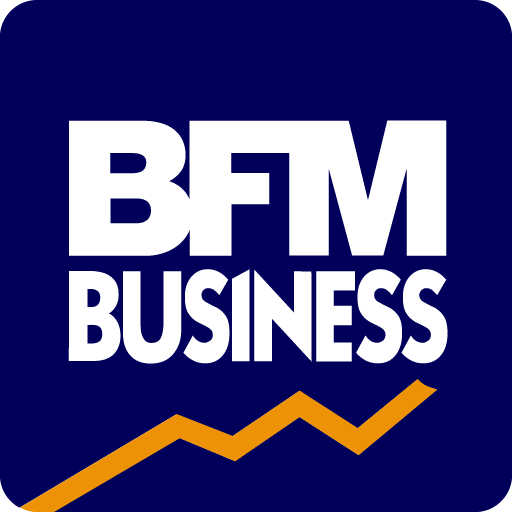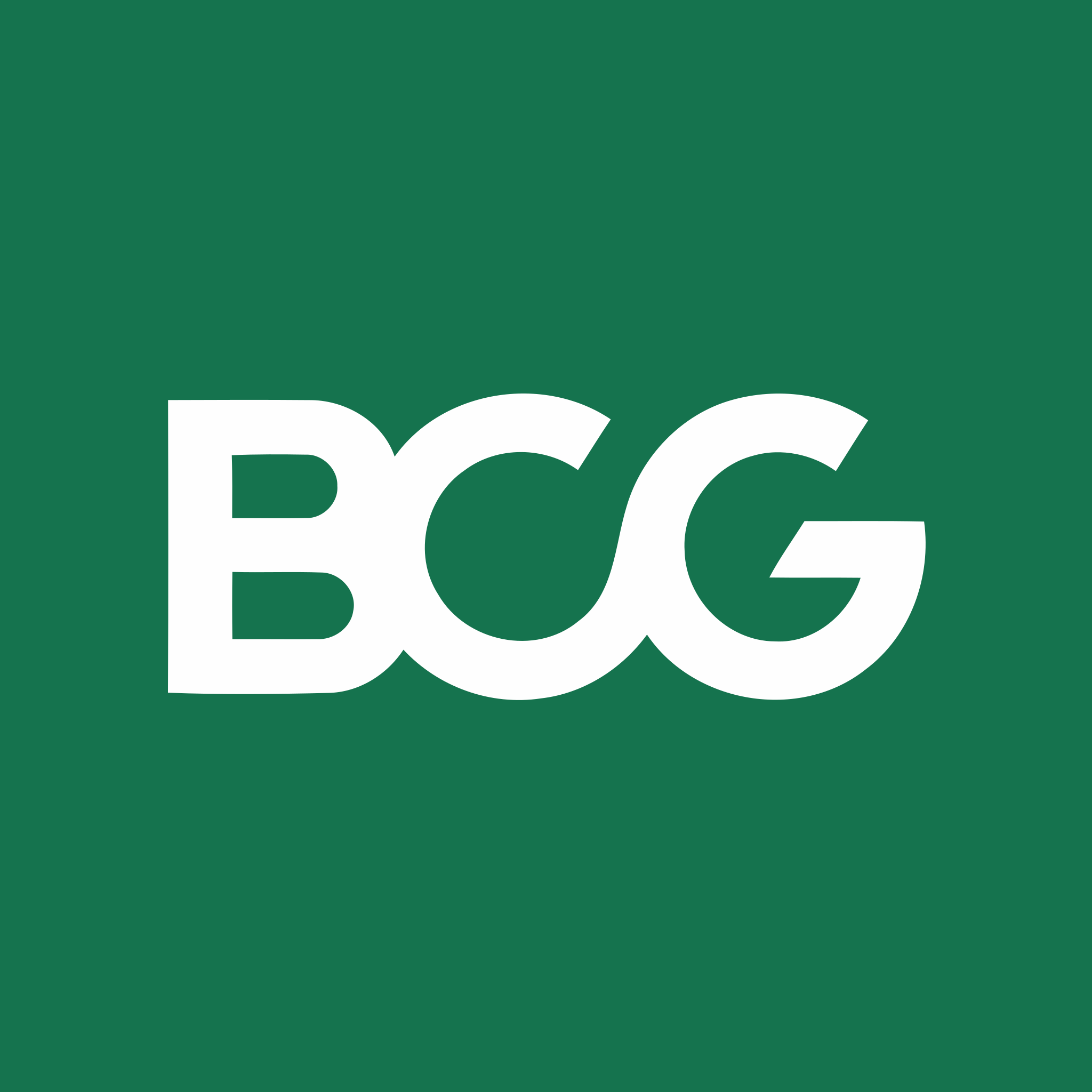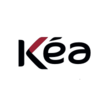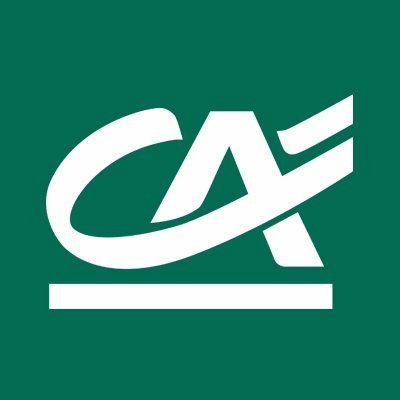Detailed content of our market study
 Inforamtion
Inforamtion
- Number of pages : 35 pages
- Format : Digital and PDF versions
- Last update :
 Summary and extracts
Summary and extracts
1 Market summary
1.1 Definition and presentation
The eyewear market includes items and accessories worn on or over the eyes. Eyeglasses are worn for a variety of reasons, the most common of which include use as fashion adornment, for lack of visual ability, or for protection.
The three largest categories in the eyewear industry are in fact:
- Glasses
- Sunglasses
- Contact lenses
The industry thus encompasses all the players and processes involved in the design, production, and retailing of eyewear. Globally, there are promising projections for market growth. The aging population and the consequent development of life expectancy worldwide is one of the variables responsible for the positive forecast of increasing numbers of people needing eyewear. In developed countries, estimates are growing even more, with about 70 percent of adults needing corrective lenses. The latter figure is reinforced by rising disposable income, which should continue to drive premiumization of the eyewear industry in all segments, especially among noncorrective eyewear. The Italian market specifically should also be influenced by demographic changes, channel proliferation (e.g., GDO, internet), and emerging fashion trends.[Safilo].
1.2 The global market
The global eyewear market is growing significantly due to the presence of various factors, including: evolving fashion trends, increasing consumer awareness of eye health, and the adoption of luxury accessories, particularly among millennials. The global eyewear market was valued at US$***.* billion in **** and is expected to reach US$***.* billion in ****, with a CAGR of*.* percent.
Global eyewear market evolution World, ****-****, US$ billion Grand View Research From a regional perspective, Europe dominated the market in ****, accounting for nearly ** percent of global sales. This value is due to the growing demand for eyewear such as sunglasses, colored contact lenses, and frames as fashion accessories. In addition, the region is a hub for several well-known fashion brands, such as Gucci, Prada, Tom Ford and Christian Dior, creating a lucrative space for the eyewear market. In addition, the market is regulated by thriving legislation, as sunglasses and optical products in EU countries are considered indivudual protective equipment(***) in ****. This is strongly driven by the development of the region's much-developede-commerce sector, which has helped improve the user experience with regard to vision advice and the selection of the most suitable eyewear.[***]
Global consumer trends in ****
Companies in the industry that wish to unlock high ...
1.3 The Italian market
The **** industry pre-consensus, presented at the MIDO trade show, attests to an Italian optical market production of *.** billion euros, registering a ** percent growth over ****. The total balance of Italian manufacturers includes *** companies employing **,*** people.
Since more recent data regarding the local optical market is not available, the value of the domestic market is constructed on the data analysis carried out by MIDO in ****. As can be seen from the table below, the market grew in percentage terms by *.* points from ****. This is an extremely positive figure when analyzing the last three years, where a steady growth can be seen. Only in **** was there a decrease in market value of -**.* percent, certainly largely influenced by the effects due to the restrictions given by the pandemic.
Values in millions of euros
[***]
Optical market value Italy, ****, in € MIDO
As can be seen in the graph above (***).
Forecast market performance in ****
Despite the fact that **** has recorded tendentially positive data, the forecast for **** does not appear to be equally favorable. The forecast scenario proposed by MIDO discounts a gradual slowdown in foreign trade of developed countries and the growth of a number of decisive elements in the market: high energy costs, the depreciation ...
1.4 Imports and exports
Foreign trade is characterized by a preponderance of exports over imports. This results in overall market welfare, which has declined slightly in **** (***). Specifically, it is noted that the growth from **** to **** of exports is ** percent; taking into consideration the same time range, it is evident how the value of imports remained almost unchanged, registering an increase of ** percent. Imports, exports and coverage rate: optics market Italy, ****-****, US$ UNComtrade The main consumer countries of Italian products in the optics market are the United States (***). Considering the two main segments of the industry (***). In America, the share of Italian eyewear exports in **** absorbed more than ** percent of the entire figure, while in the Asian region in **** it came to **.** percent. In Africa, the export absorption share remained basically stable, registering an increase of *.*%. In Oceania, a marginal area with a share close to *.*%, exports grew by **.*%.[***]
Going to analyze **** exports by product type (***), the table is as follows:
Optical frames Sunglasses USA **,*% **,*% France **,*% *,*% Germany *,*% *,*% UK *,*% *,*% MIDO
Main export destinations of optical market items Italy, ****, % UNComtrade As for the main supplier countries, it can be seen that the main supplier is China, with a percentage rate of **.* percent; followed by Japan (***). Main ...
1.5 Impact of COVID-19
In **** , there were signs of a slowdown in global exports , as well as the attestation of a worrisome employment situation, portending a possible contraction related to the performance of some specific companies. With the release of Covid-**, the eyewear sector loses its main international trade show, MIDO, which is postponed for ****. Despite the possibility of staying open (***), many companies had to resort to layoffs. This situation had a decidedly negative impact on production in January and February ****. It is also recorded that during the lockdown months the opticians who decided to stay open were mostly dealing with urgent care.[***]
ANFAO
With the extended closures, people did not have the opportunity to consult their doctors for any eye examinations, and being stuck at home did not have a reason or opportunity to buy sunglasses. In addition, with many people losing their jobs or finding themselves in more precarious economic situations, products such as sunglasses took a back seat to priority purchases.
The table below illustrates the economic impacts of COVID-** on the LuxotticaEssilor eyewear brand. While not representative of the entire market, LuxotticaEssilor is one of the largest global and Italian players in this market, and it can be assumed that other ...
1.6 The Russian-Ukrainian conflict
The Russian-Ukrainian conflict has suddenly changed the global economic outlook, which was already greatly shaken by uncertainty related to new variants of the Covid-** virus. While the global economy is unabated in its search for a new equilibrium after two years of the pandemic, the attack is bringing the two states involved in the conflict to their knees, creating significant strains on commodity-related costs ; this leads to a blockage of trade lines, as well as the introduction of great uncertainty weighing on households and businesses about future prospects. On a general level, Russia is not one of the most decisive players for Italian eyewear, as in value it weighs less than * percent for both frames and sunglasses (***). The biggest backlash at the sector level will be related to the decrease in purchases by Russians in the Italian territory, due to the reduction in tourism.
Certainly, the most worrying situation economically is the one related to the energy crisis, which has brought a rise in costs and electricity that, together with increases in transportation, logistics and packaging, will greatly affect the budgets of companies. The war in Ukraine has opened a critical economic phase, leading to a change in household and business ...
2 Demand analysis
2.1 Overview of demand
The eyewear industry has numerous sub-segments, a relevant distinction in demand analysis is based on the purpose of eyewear:
Non-corrective use (***) Correctiveuse (***)
Corrective eyewear (***) made up more than four-fifths of the Italian market. However, sunglasses constituted the second largest independent segment. The breakdown of sales by product type is shown below; the data analyzed are from ****, the last year available for this market.
Specifically, we see that nearly ** percent of the market is composed of purchases related to ophthalmic lenses(***). As for contact lenses and sunglasses, these account for the smallest share of turnover: **.* percent for the former and **.* percent for the latter.
Breakdown of eyewear market turnover, by product Italy, ****, % ANFAO
Below is the specific value of retail sales analyzed as a percentage in the graph above; this shows the specific turnover of ophthalmic lenses, which is *.* billion euros.
Value of retail sales of eyeglasses, by product Italy, ****, in millions of € ANFAO *The following is the expenditure item for eyeglasses and contact lenses and clothing accessories. Regarding the second item, this segment is considered larger as it includes sunglasses. Instead, the **** data considers the ISTAT Visual Aids item, which includes Eyeglasses and Contact Lenses. Specifically, we see that from **** to ...
2.2 Determinants of demand
Corrective eyeglasses
Population and visual defects
Specifically, within the glasses sub-segment, undoubtedly the number of Italians with optical deficiencies is a determining variable. There are about ** million myopic people in Italy, and the problem is sharply increasing, registering the highest number of cases among the very young, where more than * out of ** children, already at the age of **, are affected. The main cause can be found in the many hours spent in front of electronic devices, such as cell phones, PCs or tablets. According to WHO, there are *** million visually disabled people in the world, of whom *** million are visually impaired and ** million are blind. It is projected that by **** half of the world's population could be affected by myopia; data show a prevalence to myopia especially among children, registering as early as * years of age at **%. The figure increases to **% at age ** and reaches **% in adulthood.[***]
A useful element to keep in mind is the degree to which people are sensitive to eye health and safeguarding it through regular eye examinations. The data, as seen in the chart below, are reassuring; nearly ** percent of respondents check themselves regularly, *.* percent several times a year. Analyzing the data according to the gender ...
2.3 Cyclic question: sunglasses
The graph represents the proportion of searches for a given term in a given region during a given time period, compared to when it was searched for the most (***).
Thus, a value of ** means that the keyword was used less often in the region concerned, and a value of * means that there is not enough data for this keyword.
In the past ** months in Italy, the search for the keyword "sunglasses" is intensely driven by seasonality. Google search for the product is extremely popular between the months of May and August, roughly corresponding to the summer season.
Searches for the term "sunglasses" Italy, ****-****, Google Trends index Google Trends
2.4 Geographical distribution of demand
As for the distribution of the expenditure item for optical items, it can be seen that the highest value is in the North, followed by the Center and the South.
3 Market structure
3.1 Market organization and dynamics
The Italian eyewear market is the flagship for the domestic economic sector, for reasons that can be traced back to the historical past and the industrial present. Half of the licensed manufacturers are in Italy, thus covering ** percent of the world license production and ** percent of the world market.[***]
The number of active enterprises between **** and **** is shown below; specifically, there is a percentage reduction in the value of active enterprises in the sector by **.* percent.
Enterprises active in the manufacture of spectacle armatures of all types, mass-produced frames of common spectacles Italy, **** - ****, number of units Istat The most highly attested legal form for this sector is the Individual Entrepreneur, Freelancer and Self-employed (***).
Legal form enterprises active in the manufacture of spectacle armor of all types Italy, ****, % Istat Analyzing the last few years shows a growth in the number of employees employed; this increase has been steady, leading to +*.**% in **** compared to ****. Number of employees enterprises active in the manufacture of eyeglass armor of all types Italy, **** - ****, number of units Istat
3.2 Value Chain
The value chain of the analyzed market takes in various players, from the production of materials to the sale of finished products.
Material suppliers: this first stage involves companies that produce primary materials for optical lens production, such as glass, plastic, and anti-reflective coatings. Lens production: lenses are manufactured using the materials mentioned earlier; lenses can be optical or ophthalmic, for prescription glasses or sunglass lenses. Lens fitting: the lenses, then, are placed in the frames; these can vary from prescription eyeglasses to sunglasses. Distribution: the frames are distributed to retailers, optical stores and, increasingly, through online trade channels. Retail: the final product reaches the consumer via prescription eyeglasses or sunglasses, through physical stores or websites.
3.3 Distribution channels
Before getting into the details of how the product is distributed, it is essential to note that there is a distinction between the distribution of prescription eyeglasses and that of sunglasses; in fact, the latter are perceived as a fashion product and therefore require less specialized assistance at the time of purchase. This differentiation greatly affects the distribution methods, as sunglasses can also be found, therefore, in outlets related to the world of fashion and clothing.[***]
Online Channels
Recent years have seen an increase in channels related to online distribution, with consumers showing increasing confidence and familiarity with buying eyewear online.[***] In the eyewear market, online retailers are trying to gain market share especially in the low-end segment and the sunglasses category. The ability to sell exclusively online undoubtedly lowers fixed costs and allows these companies to offer a lower final price. In addition, the most affected category is noncorrective eyewear, as the consumer purchase path is easier and faster than that of corrective eyewear.
Specialized Distributors: optical stores
Optical stores represent the largest eyewear distribution channel in Italy, with a scattered and fragmented territorial radicalization. Specifically, we note the presence of players such as Vega Optic and Salvatore piazza, who ...
3.4 Made-in-Italy conquers the eyewear industry
Both the global and domestic markets are governed by an oligopoly in two specific product categories: lenses and frames. Essilor dominates contact lens production with a ** percent market share globally, while Luxottica owns ** percent of the global optical frames market[***].
The production of high-end eyewear is essentially in the hands of five players, four of whom are Italian. The organizational model revolves around patents; therefore, the following companies produce on behalf of some of the big luxury brands in the world. For years the hierarchy has been as follows (***)[***]
Luxottica: Italian multinational company that owns the famous Personal and Ray Ban brands. Licensed production for Chanel, Armani, Prada and Michael Kors. Safilo: Italian multinational with licensed production for Dior, Fendi, Céline and Marc Jacobs. De Rigo Vision: Italian multinational with licensed production for Lanvin, Loewe and Carolina Herrera. Marcolin: Italian multinational with licensed production for Tom Ford, Tod's and Ermenegildo Zegna.
This market organization has changed slightly since the French multinational Kering came on the scene. The company owns the Gucci, Yves Saint Laurent, Puma, Bottega Veneta, Alexander McQueen, Stella McCartney, and Balenciaga brands, and decided in **** to end its partnership with Safilo and create its own production[***].
Turnover of ...
3.5 The industry giant: EssilorLuxottica
Luxottica
Luxottica is a giant in the eyewear industry, with a dominant position that looks set to last for the foreseeable future; despite a generally positive picture, the **** market closed with a *.** percent decline . This is driven by the slowdown in the fourth quarter, with revenues, however, up *.*% thanks to good results in France, Italy, Spain, the United Kingdom, and the Scandinavian countries. In North America , revenues were up *.* percent from the previous quarter. Slowing down was e-commerce, which posted * percent growth, with online sales accounting for only * percent of total revenues.[***]
The company began with humble beginnings in an Italian workshop in Agordo, Veneto, but has grown into a multi-billion dollar empire that owns some of the world's most renowned eyewear brands. In the United States, Luxottica is the leading optical retailer and operates more than *,*** stores, generating about $*.* billion in retail sales each year. Globally, the company's annual sales are about $*.* billion, and Luxottica is responsible for top brands such as Ray-Ban, Versace and Oakley. The company also holds licenses for brands such as Chanel, Prada, Giorgio Armani, Burberry, Versace, Dolce and Gabbana, Michael Kors, Coach, Miu Miu, and Tory Burch.[***]
EssilorLuxottica
EssilorLuxottica is a multinational global leader in ...
4 Supply analysis
4.1 The offer
Sales
Category segmentation identifies three major sectors within the eyewear industry:
Eyewear (***) Sunglasses Contact lenses
Sales value of the eyewear market, by category Italy, ****, in % ANFAO
Sunglasses classification
Analyzing the sunglasses segment, it is possible to define the different characteristics of the product, dividing it into various categories:
Category *: These lenses have minimal gradation. Protection from light and glare is almost non-existent. Category *:are lenses with sun protection, suitable only when the sky is overcast or on cloudy days. Category *-*: are the most common and best suited for most light conditions, with protection between **% and **%. Category *:these lenses allow a maximum of *% of light to filter through. This extremely high color gradation is designed especially for very intense, glaring solar radiation on shimmering surfaces, such as the ocean or a glacier high in the mountains, with strong reflections from snow and ice. Driving with this type of lens is not allowed. In addition, lenses can be categorized by the gradation of lens color; the latter is not only an aesthetic fact, but affects the ability to protect against solar radiation. Therefore, in choosing one coloration over another, it is important to consider, in addition to one's personal taste, the environment ...
4.2 Prices
The average price of eyewear, over the past decade, has been particularly fluctuating. Forecasts, until ****, estimate a steady increase in the average price, until it reaches €**.**, always lower than the peak reached in **** when the average price was €**.**. Prices are very different within the different product categories of the eyewear industry. Undoubtedly, products whose functional and conceptual significance is intended to last longer have higher prices than products whose use is limited.
Temporal evolution of the average price of sunglasses and prescription frames Italy, ****-****, in € Source: ****
Price segmentation: high, medium, low end
A classification of eyewear based on brand image and positioning in the eyes of consumers allows for a further price distinction. The high-end segment is subsequently divisible between luxury brands (***) [***]. Again, the price gap is visible, this time within a single category: eyewear.
Segmentation, Sunglasses Positioning Price Example Product Distribution Channel High-end Luxury > €*** Saint Laurent, €*** Optical chain, Grand Vision Mid-high-end €***-€*** Ray-Ban €*** Optical Chain, Salmoiraghi & Viganò Middle-end Medium €**-€*** Ralph Lauren, ***€ Optical Chain, Salmoiraghi & Viganò Low level Mass < €** Fielmann collection, from €**.** for graduated sunglasses and from €** for those with progressive lenses Chain Fielmann is designer, manufacturer, distributor and optician, and by covering every stage of the value chain, ...
4.3 Supply trends
Current trends are making the coming eyewear season characterized by conscious innovation, the search for sustainable beauty, modern vintage and visionary minimalism. Details, colors, materials and shapes, the eyewear of the **** season will be revolutionary. The trends in the offering are divided into three basic macro trends:
Design-Wise: products made with meaning under the banner of sustainable innovation; the color palette is harmonious, expressing stillness through the colors of nature, tending toward pastel. The style revolves around maxi-minimal, there is a strong presence of basic monochrome, simple but novel geometries express purity and serenity. The design is visionary, there is a focus on "tech" craftsmanship. it is a trend that maintains a focus on prioritizing details, using color to ensure longevity, focusing on comfort and well-being, innovating to educate. Soul Space: trend driven by nostalgia, nature, comfort and craftsmanship; its palette is warm, inspired by the colors of the earth and the natural world. The mood is romantic, vintage, floral, boho. The key points that characterize this trend are based on the use of accessories aimed at self-care, products that have a story to tell, and responsible projects to make ethical and sustainable products. Full Spectrum: a trend that embraces life ...
5 Rules and regulations
5.1 Regulations on the sale of all categories of eyeglass products
Because of the special nature of the product categories, all eyewear, whether worn for corrective or noncorrective purposes, is subject to specific and strict regulation at the national and international levels.
In Italy the distinction is between:
*Medical devices, which include frames and ophthalmic lenses.
Commercial sale is regulated by D. Lgs. no. **/** and the Ministry of Health Decree **/**/**. Customer information is specified by EN ***** in addition to the Ministry of Health decree.
*Personal protective equipment, which includes sunglasses, which are used for protection from the sun.
All aspects (***) are regulated by EU ****/***
In April ****, the new EU Regulation ****/*** was introduced to extend and amend the old Directive **/***/EEC. The new regulation aimed to provide a clear and concise set of rules for the entire value chain of the eyewear industry in the EU, from supplier to retailer.
As for the provisions on eyewear retailing, these are dictated to implement Article ** of Decree No. **/****. This stipulates that only individuals in possession of the qualification qualifying for the exercise of the auxiliary health art of optician are authorized to sell eyeglasses and custom-made, protective and corrective lenses for visual defects to the public. However, other commercial eservizi, which include pharmacies ...
5.2 Bonus View
Since April **, ****, the web platform to apply for the sight bonus, which provides a financial contribution for the purchase of prescription eyeglasses and corrective contact lenses, has been activated. The subsidy was introduced by Law No. *** of December **, ****, and is disbursed for those who meet the requirements established in the Decree of the Minister of Health of October **, **** (***).
Beneficiaries
The subsidy is designed for citizens with ISEE not exceeding ** thousand euros and is aimed at supporting expenses concerning eye health protection, also in view of the economic difficulties resulting from the pandemic emergency. It is expected that the bonus can be applied for only once, for each member of the household to which the ISEE refers. Beneficiary citizens will be able to choose two ways to access the contribution:
voucher worth ** € for each beneficiary, expendable within ** days of issuance at authorized businesses; ** € reimbursement for a purchase already made (***). The reimbursement is eligible for all purchases made from January *, **** until May *, ****.
To apply for the grant, you must have SPID level * or higher or Electronic Identity Card (***). The platform will remain active until December **, ****, and the voucher, issued at the same time as the online application, is immediately spendable in one lump ...
6 Positioning of actors
6.1 Market segmentation
- Safilo Group
- Oftalmica Galileo
- De Rigo
- Carl Zeiss Group
- Essilor Luxottica groupe
- Marcolin (LVMH Groupe)
- Kering Eyewear
All our studies are available online in PDF format
Take a look at an example of our research on another market!
 Choosing this study means :
Choosing this study means :
Access to more than 35 hours of work
Our studies are the result of over 35 hours of research and analysis. Using our studies allows you to devote more time and added value to your projects.
Benefit from 6 years' experience and over 1,500 industry reports already produced
Our expertise enables us to produce comprehensive studies in all sectors, including niche and emerging markets.
Our know-how and methodology enable us to produce reports that offer unique value for money.
Access to several thousand articles and paid-for data
Businesscoot has access to all the paid economic press as well as exclusive databases to carry out its market research (over 30,000 articles and private sources).
To enhance our research, our analysts also use web indicators (semrush, trends, etc.) to identify market trends and company strategies. (Consult our paying sources)
Guaranteed support after your purchase
A team dedicated to after-sales service, to guarantee you a high level of satisfaction. +44 238 097 0676
A digital format designed for our users
Not only do you have access to a PDF, but also to a digital version designed for our customers. This version gives you access to sources, data in Excel format and graphics. The content of the study can therefore be easily retrieved and adapted for your specific needs.
 Our offers :
Our offers :
the eyewear market | Italy
- What are the figures on the size and growth of the market?
- What is driving the growth of the market and its evolution?
- What is the positioning of companies in the value chain?
- Data from several dozen databases
5 reports pack (-15%) IT Italy
- 5 reports at €75.6 excluding VAT per study to choose from our Italian catalogue for 12 months
- Save 15% on additional studies purchased
- Choose to be refunded any unused credit at the end of the 12-month period (duration of the pack)
See the terms and conditions of the pack and the refund of unused credit.















